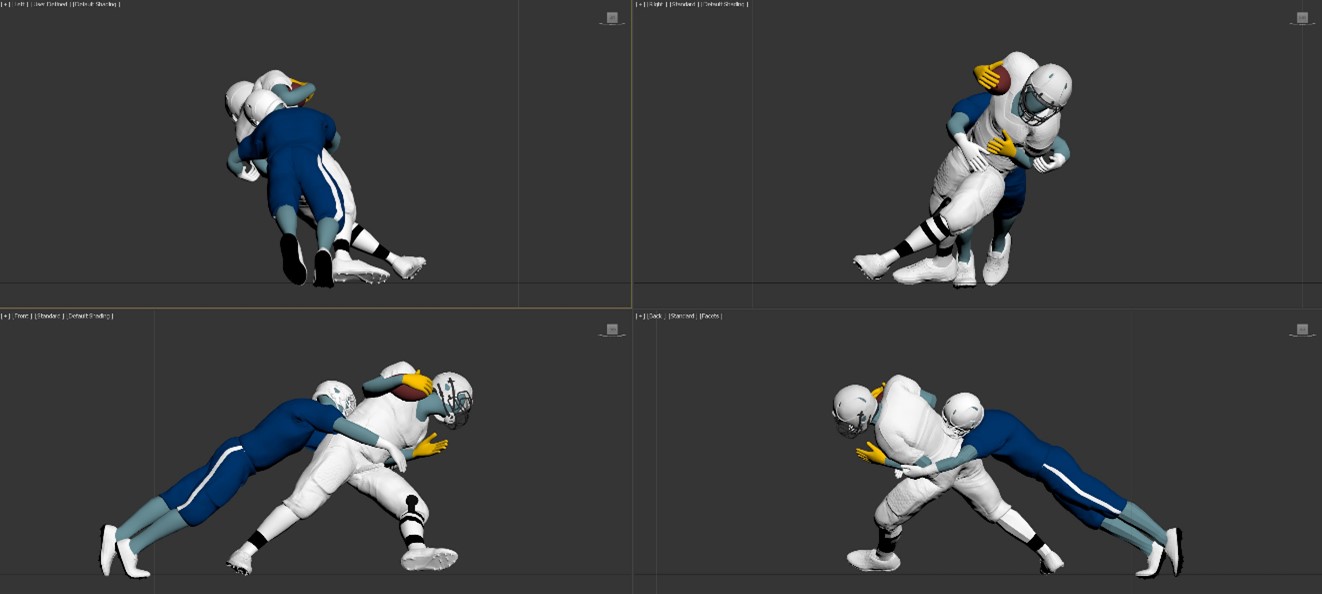Biomechanical Injury Analysis
with 3D Model

Robert J. Nobilini, Ph.D., Biomechanical Engineer
Case Summary: A high school football player incurred a spinal cord injury at the C3-C4 level when he went headfirst into a defender during a tackle. The plaintiff claimed that his posture at the time of the tackle was due to his left foot slipping as he attempted to cut, caused by a defective turf installation.
Expert Analysis: The incident was captured on video from two separate cameras. A biomechanical analysis of these videos showed that the plaintiff was tackled from behind prior to striking his head. The analysis further noted that the forces from this tackle had pulled the plaintiff’s upper body down and to the left, forcing him to move headfirst into an oncoming defender. Analysis of the plaintiff’s left lower extremity revealed that, as his upper body was pulled down and to the left, his left foot moved in the air across his body, with the bottom of his cleat rotated such that it was not in contact with the ground as it moved laterally. The results of this analysis revealed that the plaintiff’s headfirst posture at the time of the traumatic impact to his head was the result of being tackled from behind and not the result of his foot slipping. Therefore, the condition of the turf was not a cause of the plaintiff’s cervical injury.
Explanation of the biomechanical analysis to a jury was expected to be a challenge because the two videos of the incident were partially obstructed by people on the sidelines. The biomechanical engineer worked closely with Laurence R. Penn, Senior Forensic Animation/Video Specialist with DJS, to overcome this obstacle and develop an accurate visualization of the incident with digital models. Laurence conducted reverse projection photogrammetry using the two videos, allowing for a reconstruction of the players’ movements on the field in a 3D environment. The resulting model allowed for the players’ movements to be visualized from any angle, as shown below, providing an effective demonstrative exhibit and supporting the biomechanical engineer’s ability to present a clear explanation of the injury analysis during trial.
Click here to watch the 3D Animation of this incident.
Categories: Biomechanical Engineer | Biomechanical Engineering | Robert J. Nobilini, Ph.D.Tags: 3D Animation | Injury Analysis | Photogrammetry | Sports Injury



